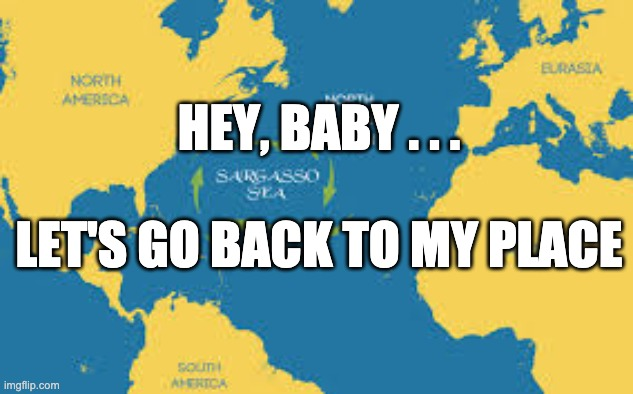
It's almost Valentine's Day, so let's talk about sex.
Eel sex!
Well...we can't, really.
We don't know exactly where, or how, eels get busy. It's a 2000+ year old puzzle. It's not like we haven't tried. But the sex life of eels is a mystery smothered in secret sauce. 1/5
Eel sex!
Well...we can't, really.
We don't know exactly where, or how, eels get busy. It's a 2000+ year old puzzle. It's not like we haven't tried. But the sex life of eels is a mystery smothered in secret sauce. 1/5

All the eels in the Americas, Europe, and N. Africa are born at sea They migrate to land, live 10-20 yrs (or more!) and then go back to sea to mate & die.
They *probably* are all born, mate, & die in the Sargasso Sea. But we're not certain. 2/5
They *probably* are all born, mate, & die in the Sargasso Sea. But we're not certain. 2/5

It's where we've found the smallest baby eels. And it's the area where radio-tracked eels have seemed to be headed towards before they disappear.
But no one has yet tracked an eel to their mating ground. And no one has ever seen them mate. 3/5
But no one has yet tracked an eel to their mating ground. And no one has ever seen them mate. 3/5

Eels won't breed in captivity, & don't develop sexual organs until they start their journey back to sea.
At that point they stop eating, & survive on stored fat & by self-cannibalizing their own bones.Their digestive organs dissolve into their developing reproductive organs. 4/5
At that point they stop eating, & survive on stored fat & by self-cannibalizing their own bones.Their digestive organs dissolve into their developing reproductive organs. 4/5

So. This Valentines Day, when your beloved -- or aspiring beloved! -- comes at you with chocolates or flowers, think about how they measure up to eels. Ask yourself:
"Would they eat their own bones just to be with me?"
Probably not. 'Cause no one's as romantic as an eel. /fin
"Would they eat their own bones just to be with me?"
Probably not. 'Cause no one's as romantic as an eel. /fin

• • •
Missing some Tweet in this thread? You can try to
force a refresh















